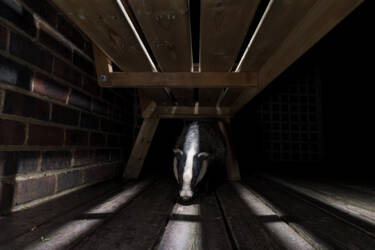9 camera tricks for creative beach photography

Elevate your beach images and enhance your photography know-how with these tips and tricks
Dreamy beachscapes are the ultimate way to level up your photography. Develop your creative eye by switching over to manual settings and take full advantage of these helpful tips to reach new heights (or cliffs!).
1. Get close to the water
It’s all in the composition. First, start by taking advantage of the natural line of the water and frame your camera to choose a focal point (the part of a photo where your eye is drawn to instinctively). If you’re shooting a portrait, position your subject along the edge of the water where the sand meets waves. Don’t be afraid to get low and position your camera close to the sand to mix up the angles and, if in doubt, reflections of any body of water add another interesting layer.
Palm trees, rocks, cliffs, driftwood or even umbrellas act as natural frames for your photograph and can help to improve your composition.
Nikon Team
2. Capture sun stars
Capturing small details will immediately elevate your photograph. Whether that’s grain from the sand, rock pools full of marine life, footprints, drawings in the sand or a candid family photoshoot (George Karbus nailed this with his Nikon Zfc), shooting finer details will trump photos of landscapes without a focal point.
Sun stars add another layer of vibrancy. Also known as the starburst effect, sun stars appear in your photograph when you shoot with the sun partially in view and your aperture set to around f/11. The effect occurs because the light of the sun is split across the blades of your lens’ aperture.
3. Visit at golden hour
Golden hour is the perfect time to visit as a beginner photographer. To avoid crowds, wake up early to maximise your time shooting shortly after sunrise, or visit a less crowded spot just before sunset. Shooting beachscapes can often be difficult because of harsh midday sun and shadows. But at golden hour, the sunlight is softer and allows a warm, flattering glow over your subject.
Top tip: we know beach photography isn’t just for summer, so alter your White Balance to be cooler or warmer to help convey the mood of the photograph.
4. Use flash
Finding harsh shadows on your portraits? When taking portraits outside, use flash to fill in the light and illuminate your subjects.

5. Go wide
Create drama with a wide-angle lens. Wide-angle lenses (ranging from 24mm-35mm) and ultra wide-angle lens (below 24 mm) make the foreground of a photograph seem bigger, which draws the viewer in and creates a greater sense of depth – ideal for framing sprawling landscapes. The NIKKOR Z DX 12-28mm f/3.5-5.6 PZ VR is Nikon’s first Z mount power zoom and is perfect for both vlog-ready close-ups and beautiful landscapes. The AF-P DX NIKKOR 10-20mm f/4.5-5.6 G VR and the AF-S NIKKOR 18-35mm f/3.5-4.5 G ED are good beginner-friendly landscape zooms.
6. Experiment with shutter speed
Freeze seagulls in mid-air, the moment waves crash against the shore or grains of sand trickling down your subject’s hands by increasing your shutter speed. Higher shutter speed, such as small fractions of a second (1/250), is fast enough to freeze action.

7. Master exposure
Beaches are tricky to photograph, as your camera can easily underexpose in auto mode, especially when the sun, sky and sand appear to be too bright. When shooting in manual mode, check your camera’s dial for exposure compensation and adjust as you see fit: EV +1 will brighten the image, while EV -1 will darken it.
8. Try backlighting
Try backlighting for added sophistication. Best tried at golden hour, face your camera towards the sun with your subject in between. When you look through your viewfinder, the light should shine past the sides of your subject, with the sun mostly hidden. Next, adjust your exposure (EV +1 to brighten, EV -1 to darken) according to the amount of light in front of you. You can also adjust your White Balance to add warmth into the image.
9. Shoot RAW
A RAW file is an uncompressed version of an image file. If you decide to shoot RAW, rather than JPEG, you can edit your photos in post-processing with much less effort and fix any issues such as underexposure — making your life a lot easier! For a deeper dive into why you should shoot RAW, click here.
Start your creative journey here
Featured products
More in outdoor shooting
Photographing wildlife in your garden — a guide to lighting

For limitless creativity











